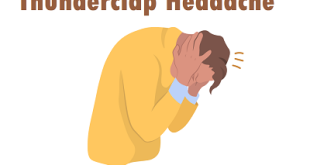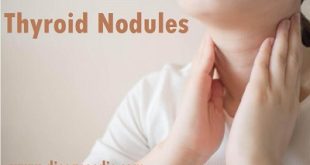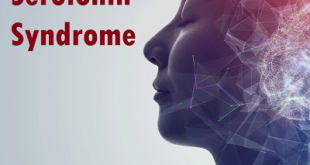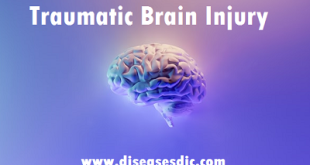Overview
Tension headache is a common type of headache characterized by mild to moderate, steady, and dull pain that typically affects both sides of the head. It is often described as a sensation of pressure or tightness around the forehead or the back of the head and neck. Tension headaches are generally not accompanied by other symptoms like nausea or sensitivity to light and sound, and they are not typically worsened by physical activity. These headaches are often caused by stress, muscle tension, poor posture, or anxiety, and while they can be bothersome and uncomfortable, they are generally not severe and can be relieved through rest, relaxation, over-the-counter pain relievers, and addressing the underlying triggers.
Types of Tension Headache
There are two main types of tension headaches:
Episodic Tension-Type Headache (ETTH)
This type of tension headache is the most common. It is characterized by episodes of headache that occur sporadically. The headaches typically last from 30 minutes to several days and may happen infrequently or periodically.
Chronic Tension-Type Headache (CTTH)
This type of tension headache is less common but can be more persistent. It is characterized by headaches that occur for 15 or more days per month for at least three months. The pain is usually more constant and may vary in intensity throughout the day.
Both types of tension headaches share similar characteristics, such as a bilateral (on both sides of the head) and pressing or tightening sensation. They are not typically associated with other symptoms like nausea or vomiting, and physical activity usually doesn’t worsen the pain. The exact cause of tension headaches is not entirely understood, but factors such as muscle tension, stress, and certain lifestyle factors may contribute to their development.
Epidemiology
Tension headaches (TH) are the most common type of primary headache disorder and one of the most prevalent conditions worldwide, affecting about one-fifth of the global population. A Danish epidemiologic study found that approximately 78% of adults experience at least one episode of TH in their lifetimes. TH is more commonly observed in women compared to men, with a female-to-male ratio of 3 to 1. It is also the most common headache type in children, with the average age of onset falling between 25 to 30 years. While determining the exact incidence is challenging, a Danish study reported an incidence of 14.2 per 1000 person-years for frequent episodic TH.
Pathophysiology of Tension Headache
Tension headaches are common, but their exact cause remains unclear. Current understanding suggests that the pain originates from muscular or myofascial sources, characterized by dull, achy, poorly localized, and radiating sensations. However, controversy arises as electromyograms (EMGs) often fail to detect increased muscle tension in tension-type headache patients. Recent research indicates that muscle hardness is elevated in the pericranial muscles of patients with chronic tension-type headaches, regardless of headache presence. Nitric oxide is believed to play a role in tension-type headaches, as infusing a nitric oxide donor can reproduce headaches in diagnosed patients, while blocking nitric oxide production with L-NMMA reduces both muscle hardness and associated pain. Further investigation into the complex relationship between EMG levels and pain is needed to better understand these headaches.
Causes
Scientists have an idea of what may set off a tension headache, but the specific causes remain unclear. Genetics are not thought to be a factor. They can be triggered by:
- Stress
- Lack of sleep
- Anxiety
- Depression
- Repressed resentment, anger, and hostility.
Examples of tension headache triggers include the death of a loved one, coping with chronic illness (yours or someone close to you), losing a job, problems at home, financial difficulties, divorce, moving, and preparing for big events such as tests, vacations, and even weddings.
Symptoms of Tension Headache
Tension headaches are the most common type of headache and are often associated with stress, tension, and muscle tightness. The signs and symptoms of a tension headache can vary from person to person, but they generally include:
- Mild to moderate head pain.
- Feeling like a tight band around the head.
- Pain on both sides of the head.
- Headache can last from 30 minutes to several days.
- No aura or nausea (unlike migraines).
- Sometimes sensitivity to light and sound.
- Muscle tenderness in the scalp, neck, and shoulders.
- Pain may worsen with activity, but not always.
Remember, if you experience severe or sudden headaches, or if you have other concerning symptoms, it’s essential to consult a healthcare professional for proper evaluation and guidance.
Complications
The complications of tension headache are usually the inconvenience caused by the symptoms, such as:
- Lack of attention and focus which can affect your performance at work
- Reduced desire to perform any task
- Feeling of exhaustion
- Disruption in social life
What are the risk factors of Tension Headache?
Stress: High levels of stress can increase the likelihood of tension headaches.
Poor Posture: Bad posture and prolonged positions that strain the neck and shoulder muscles can contribute to these headaches.
Eye Strain: Spending long hours staring at screens or engaging in visually intensive tasks can trigger tension headaches.
Lack of Sleep: Insufficient sleep or poor sleep quality may be a risk factor for these headaches.
Anxiety and Depression: Mental health conditions like anxiety and depression can be associated with an increased risk of tension headaches.
Physical Inactivity: Lack of regular physical activity and exercise can make one more susceptible to these headaches.
Jaw Clenching and Teeth Grinding: Bruxism (clenching or grinding teeth) can lead to tension headaches.
Medication Overuse: Frequent or excessive use of pain relievers can paradoxically lead to more frequent headaches.
Caffeine Consumption: High intake of caffeine or sudden withdrawal from caffeine can trigger these headaches in some individuals.
Hormonal Changes: Fluctuations in hormone levels, especially in women during menstruation or menopause, can be a risk factor for tension headaches.
How to diagnosis tension headache?
If you experience chronic or recurring headaches, your doctor will likely perform physical and neurological examinations to identify the type and underlying cause of your headaches. To achieve this, they will utilize the following approaches:
Pain Description
Your doctor will gather essential information about your headache by asking you to describe the pain in detail. It is crucial to include the following aspects:
- Pain characteristics: Explain whether your pain feels pulsating, constant and dull, sharp, or stabbing.
- Pain intensity: Share how severe the headache is and how it impacts your ability to function. Can you continue with your regular work despite the pain? Do the headaches disrupt your sleep or wake you up during the night?
- Pain location: Indicate whether the pain is distributed throughout your entire head, limited to one side, or focused on specific areas such as the forehead or behind the eyes.
Imaging Tests
In cases where your headaches are unusual or complex, your doctor may order imaging tests to rule out any serious underlying causes, such as tumors. Two common imaging procedures used for this purpose are:
- Magnetic Resonance Imaging (MRI): This scan utilizes a combination of magnetic fields, radio waves, and advanced computer technology to produce detailed and clear images of the brain.
- Computerized Tomography (CT): A CT scan involves a series of X-rays directed by a computer to provide a comprehensive view of the brain’s structure.
By gathering comprehensive information about your headache symptoms and employing imaging tests if necessary, your doctor can better understand the nature of your headaches and determine the most appropriate course of action for treatment.
Treatment for Tension Headache
Both pharmacological and non-pharmacological treatments are useful in providing relief from tension headache. A few examples of common treatment methods for tension headaches are:
Pain-relieving medications
Non-Steroidal Anti-Inflammatory Drugs (NSAIDs) such as aspirin, ibuprofen, and naproxen are commonly available over-the-counter (OTC) and provide relief from tension headache pain. Combining two or more drugs such as aspirin and/or acetaminophen with caffeine into one drug for some people may have better efficacy than single drug medications. Prescription drugs such as ketoprofen and higher strength naproxen may be used to treat severe tension headache.
Preventive medications
Tricyclic antidepressants, antiepileptic drugs, and muscle relaxants may be used to prevent frequent episodic or chronic tension headache.
Alternate treatments
Therapies such as relaxation, biofeedback, and stress management may be helpful in relieving stress and tension while also providing pain relief. Some studies suggest a combination of anti-depressant medications and stress management therapy have improved outcomes in treating chronic tension headache.
Dietary changes
Limiting or avoiding alcohol and caffeine may help reduce the occurrence of tension headaches in some people.
Prescription or OTC medications taken on a continual basis must be monitored by a doctor and dosages must be followed correctly to prevent side effects. Overuse of pain-relief medication can result in medication-overuse headaches in headache-prone people and can also reduce the effectiveness of preventive drugs.
Alternative Therapies for Tension Headache
Tension headaches can be quite uncomfortable, but there are several alternative therapies that may help alleviate the symptoms and provide relief. Here are some alternative therapies that have been known to be beneficial for tension headaches:
- Acupuncture: Thin needles inserted at specific points to reduce tension headache frequency and intensity.
- Yoga: Regular practice can improve posture, reduce muscle tension, and promote relaxation.
- Mindfulness and Meditation: Help reduce stress, promoting relaxation and fewer tension headaches.
- Biofeedback: Learn to control physiological responses like muscle tension to manage tension headaches.
- Herbal Remedies: Some herbs like feverfew and butterbur may help alleviate headaches, but consult a professional first.
- Aromatherapy: Use essential oils like lavender or peppermint through inhalation or massage for headache relief.
- Hot and Cold Therapy: Apply warm compress or cold pack to relax muscles and reduce inflammation.
- Chiropractic Care: Adjustments may help if headaches are related to neck and spine issues.
- Massage Therapy: Target neck, shoulder, and head muscles for tension release and improved blood flow.
- Tai Chi: Gentle movements and deep breathing to promote relaxation and balance, potentially managing tension headaches.
Remember to consult a healthcare provider before trying any alternative therapies, especially if you have underlying health conditions or are taking medications.
Lifestyle changes to manage stress and prevent tension headaches
- Limit stress: Plan and stay organized. Use relaxation techniques like massage or meditation to unwind.
- Pace yourself: Take breaks and engage in activities you enjoy. Mindfulness can help stay in the present moment and reduce worry.
- Build a support system: Spend time with loved ones and consider therapy for anxiety or depression.
- Exercise regularly: Aim for at least 30 minutes of exercise five times a week to reduce stress and keep fit. Stretching can help release tension, especially in the jaw, neck, and shoulders.
- Get enough sleep: Ensure adequate rest to cope better with daily stress.
- Improve posture: Maintain a strong stance to prevent muscle tension. Stand with shoulders back and head level, tighten your core and buttocks, and sit with thighs parallel to the floor and a straight neck.
- Stay hydrated: Drink plenty of water to avoid dehydration-triggered headaches. Eat water-rich foods like fruits and vegetables.
- Eat regular, balanced meals: Avoid skipping meals to prevent throbbing headaches. Include fruits, vegetables, and whole grains in your diet.
- Limit caffeine and alcohol: Reduce coffee, tea, energy drinks, and soft drink intake, as they can trigger headaches.
- Limit pain-relieving medication: Use the smallest effective dose and avoid taking painkillers too frequently.
- Maintain a sense of humor: Laughter can help reduce tension.
- Use a headache diary: Keep track of headache triggers, including date, time, warning signs, pain location and intensity, activities, medications, and food consumed.
By implementing these lifestyle changes, you can potentially reduce the frequency and severity of tension headaches and improve overall well-being.
 Diseases Treatments Dictionary This is complete solution to read all diseases treatments Which covers Prevention, Causes, Symptoms, Medical Terms, Drugs, Prescription, Natural Remedies with cures and Treatments. Most of the common diseases were listed in names, split with categories.
Diseases Treatments Dictionary This is complete solution to read all diseases treatments Which covers Prevention, Causes, Symptoms, Medical Terms, Drugs, Prescription, Natural Remedies with cures and Treatments. Most of the common diseases were listed in names, split with categories.








head ach inside head, sensitive to light and sound
If you’re experiencing a headache inside your head, sensitivity to light (photophobia), and sensitivity to sound (phonophobia), it could be indicative of a migraine. Find a quiet, dark room to rest, use cold or warm compresses, and consider over-the-counter pain relievers with caution. Stay hydrated, practice relaxation techniques, and identify and avoid potential triggers. If symptoms persist or worsen, consult with a healthcare professional for a proper diagnosis and personalized treatment plan.